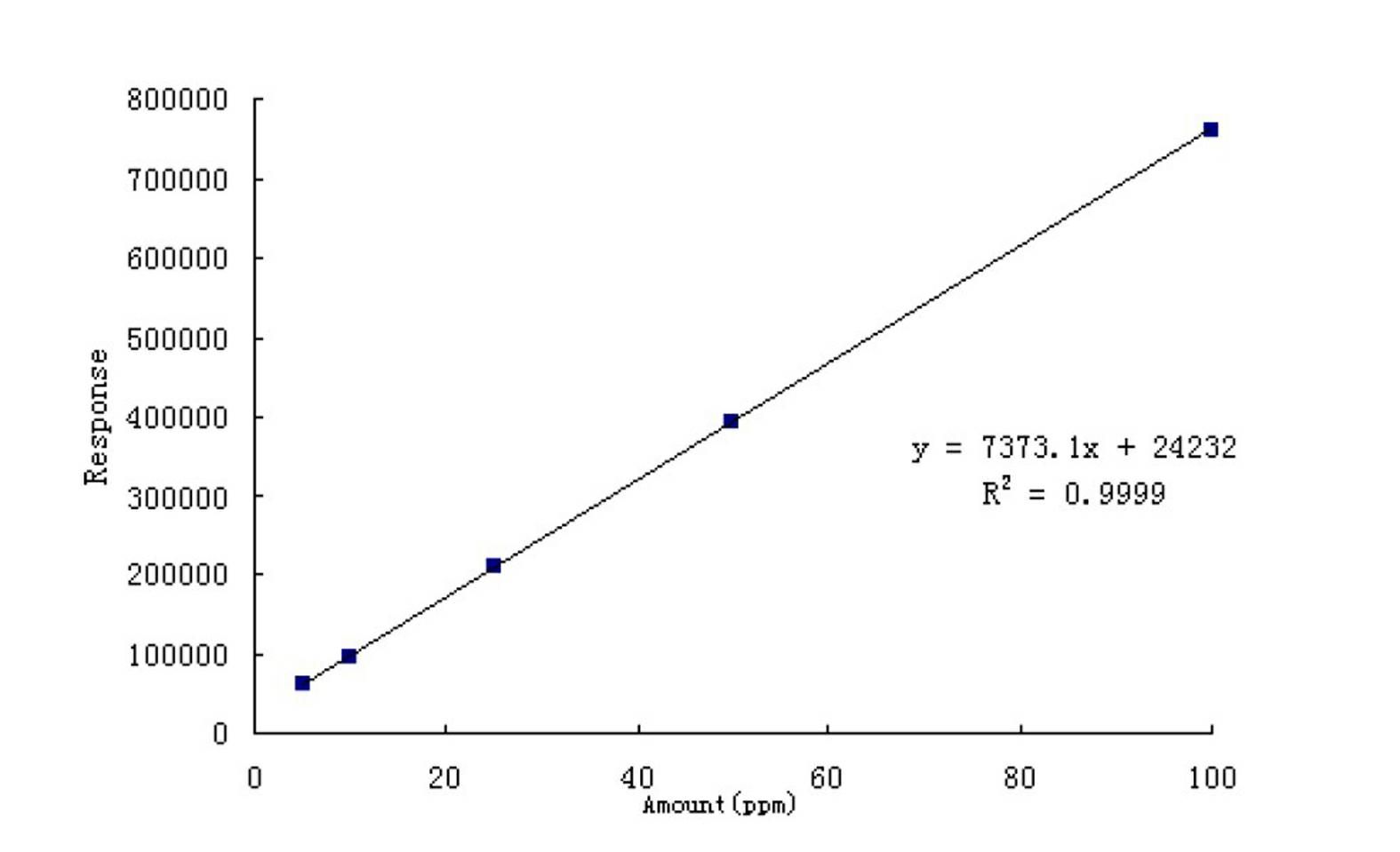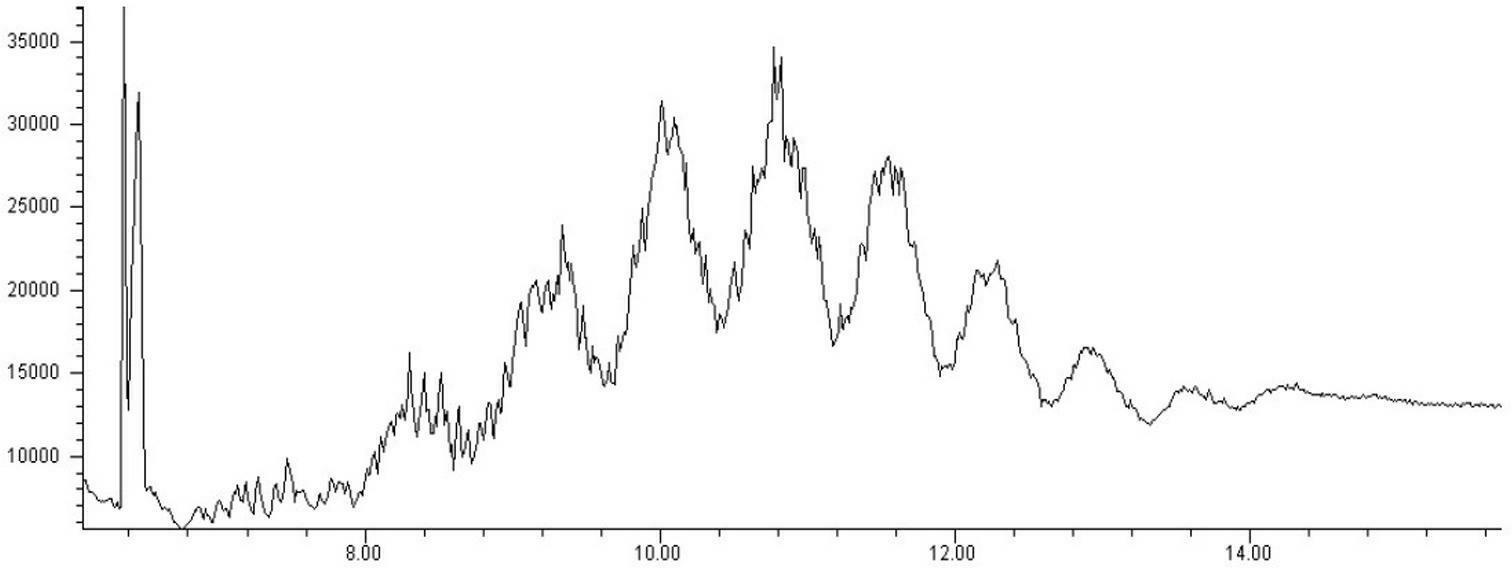Method for detecting short-chain chlorinated paraffins (SCCPs)
A technology of short-chain chlorinated paraffins and detection methods, which is applied in measuring devices, instruments, and material analysis through electromagnetic means, and can solve problems such as poor anti-interference ability, cumbersome operation, and long processing time, and achieve strong anti-interference ability , convenient operation, and sufficient and convenient extraction effects
- Summary
- Abstract
- Description
- Claims
- Application Information
AI Technical Summary
Problems solved by technology
Method used
Image
Examples
Embodiment 1
[0032] Using toluene as a solvent, a series of standard solutions of short-chain chlorinated paraffins were prepared, and analyzed and detected by gas chromatography and mass spectrometry according to the experimental conditions. figure 1 Chromatogram of short-chain chlorinated paraffins. The total target peak response value is plotted against the concentration, and the standard curve of short-chain chlorinated paraffins is established according to the three parallel measurement results of the standard solution, such as figure 2 As shown, the abscissa represents the concentration of the short-chain chlorinated paraffin standard solution, and the ordinate represents the gas chromatography peak area response value, and the functional relationship of the resulting standard curve is Y=7373X+24232, where X represents the concentration of the short-chain chlorinated paraffin, Y represents the response value of the gas chromatography peak area, and its linear correlation coefficient...
Embodiment 2
[0034] Accurately weigh 1.0 g of the prepared sample into a container, add 20 mL of toluene, and place it in an ultrasonic water bath at 23°C (room temperature) for ultrasonic extraction at 100% power for 1 hour. After the extraction is completed, take out the container and wait for cooling, then filter it through a 0.45 micron filter head into a chromatographic bottle for instrumental analysis. Three parallel samples were made for the sample, the test numbers were a1, a2 and a3, the analysis results were shown in Table 1, and the first parallel sample (test number a1) was measured 4 times, the analysis results were shown in Table 2. From Table 1, the relative standard deviation (RSD) of parallel samples was 2.37%. Known from Table 2, the relative standard deviation of the repeatability test is 1.01%.
[0035] Table 1 Test content of short-chain chlorinated paraffins in samples
[0036]
[0037] Table 2 Test repeatability of short-chain chlorinated paraffins in samples
...
Embodiment 3
[0040] The standard solution was added to the sample respectively, and the experiment was carried out according to the above-mentioned sample pretreatment method and instrument analysis and detection method. Each sample was measured 3 times in parallel to get the average value, and the recovery rate of the sample was calculated according to the actual amount added and the measured results. The experimental results are shown in Table 3. It can be seen from Table 3 that the recovery rate of the sample is above 92.8%, indicating that the test method used is suitable for the test of short-chain chlorinated paraffins.
[0041] Table 3 Recovery rate of samples
[0042]
PUM
 Login to View More
Login to View More Abstract
Description
Claims
Application Information
 Login to View More
Login to View More - R&D Engineer
- R&D Manager
- IP Professional
- Industry Leading Data Capabilities
- Powerful AI technology
- Patent DNA Extraction
Browse by: Latest US Patents, China's latest patents, Technical Efficacy Thesaurus, Application Domain, Technology Topic, Popular Technical Reports.
© 2024 PatSnap. All rights reserved.Legal|Privacy policy|Modern Slavery Act Transparency Statement|Sitemap|About US| Contact US: help@patsnap.com










